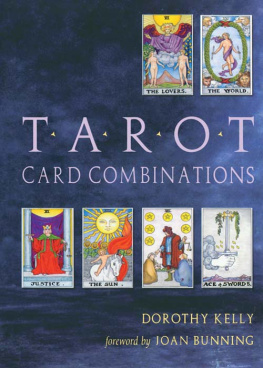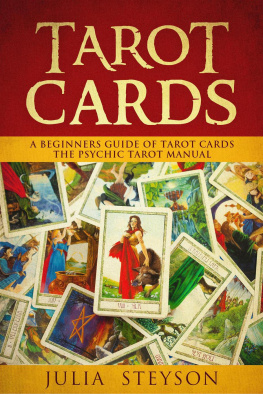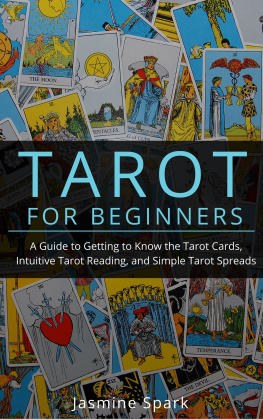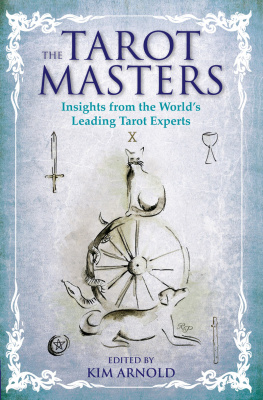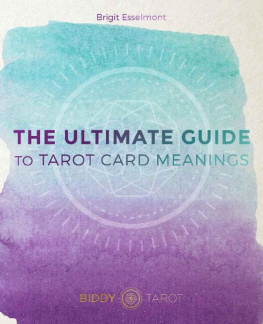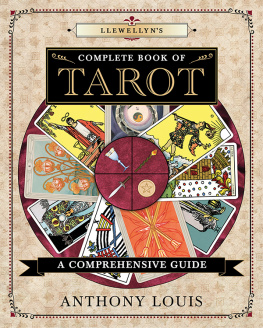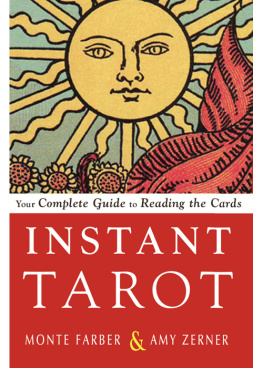Antares Stanislas
How to Read the Tarot Card Combinations
The Complete Guide
Co p y r i g ht
Tittle of this book: How to Read the Tarot Card C ombinations. The Complete Guide
A u th o r s : G i a m p ie r o T i r e l l i aka A n t a r e s S t an i s l a s
2017, G i a m p ie r o T i r e l l i .
ALL RIGHTS RESERVED . The reproduction, even partial, and by any means, is not allowed without the previous written consent of the author.
Introduction
This text continues my chain of publications dedicated to the practice of card reading. The matches between the Tarot cards and their interpretation are at the core of this work. I will consider only the major arcana in order to make this an easy purchase for those who read only with the first 22 Tarot cards, and there are many who do so. In another work, I ll discuss the complete matches regarding both the major and minor arcana for those using the entire Tarot deck. I again make this choice after having achieved success in the previous publication concerning the meaning of the Tarot cards where the text on the major arcana was separated from that of the minor arcana, to later be united in a third book. In this way, I can respond to every economic and personal need: neophyte, professional, those merely curious, etc.
I ll begin by explaining why I use the term match instead of combinations :
SIMPLE COMBINATIONS: Let s consider a set of 4 elements (a, b, c, d) and this time let s set a number less than or equal to 4, for example 2. We can see that there are 6 different groups of these elements taken 2 by 2: ab-ac-ad-bc-bd-cd. As you can see in these six groups, the group ba-ca-da-cb-db-dc does not appear. This means, bringing everything back to the Tarot, that if I study the Fool+Magician combination I must also study the Magician+Fool as well. To account for this observation, we must refer to the dispositions: the simple combinations differ because, in this case, even those which differ only in the order of the elements, for example ab and ba, are considered different groups. We always consider our unit consisting of 4 elements (a, b, c, d) and we write the simple arrangements of these 4 elements taken 2 by 2: ab-ba-ac-ca-ad-da-bc-cb-bd-db-cd-dc. For the twenty-two major arcana which we will study, some matches of two or three we have 462 total dispositions, while assuming matches of three, we will have a total of 9240 dispositions to study. The reader will understand from these numbers that it will therefore be difficult to find a text that analyzes all of these possibilities. In addition, I do not think it makes sense to do this for the simple reason that by analyzing the Tarot cards two or three at a time, we will better understand a sequence (or a spread) of seven or more cards, which is the practice of many card readers when they carry out a reading. As always it is important to understand how the cards interact with each other and what the final outcome that can result from two or three cards and not seven (859,541,760 dispositions of which no one will analyze in a text). Staying with the example of a seven-card spread, we know that within it there is almost surely a time interval: past-present-future, sometimes only present-future. It is already included, therefore, in each sequential spread, an interpretation stage that leads to a reading of more two and three card matches.
I will also point out that within the number of possible and calculated matches, we haven t considered the fact that each card could be drawn either right-side up or reversed. Those who follow me and know where I stand on this issue will understand that this is not a trivial matter. In my way of seeing the Tarot, whether a card is right-side up or reversed is very important. In simple terms, to the possible match ab-ba one should add the possibility that A or B are drawn reversed. This means that the numbers calculated in the preceding pages are surely destined to increase. To assist you in better understanding my thinking on this matter, as usual I ll give you an example that is worth a thousand words. If I consider that A=Magician and B=Fool, then we can have these possible draws that in an interpretive sense are all different: Fool + Magician will not be interpreted in the same way as Magician + Fool, and the same if I add Magician reversed + Fool or Fool reversed + Magician or Fool reversed + Magician reversed or Magician reversed + Fool reversed. You will be able to note through the practical examples of the book that sometimes there are substantial differences, at other times only the nuances will change but not the final result of the consultation. The interpretations which I will give to the suggested matches will sometimes be practical, and at other times be more introspective. This is to make you understand the sense of the match , which is that which assumes value . It is not possible to list, for obvious reasons of space, the interpretation of the individual matches for each area of our lives, such as and among others: work, love, money, etc.
Unlike my previous books, I won t insert the images of the Tarot cards since for me it is not essential since we don t need to explain their meaning through the symbols or iconography of the cards.
For me, then, each deck and its individual major arcana cards, although there are different figures, assumes the same meaning being the Tarot Numerology, Kabbalah, etc. , that is an expression of universal values that cannot differ except through the customization action taken by an author of a deck.
The Fool
- the Fool followed by the Magician: the match is not positive, even though the Magician can make us suppose that the client has the tools for a new initiative or life path in work or emotionally or in the area that is the focus of the question, the Fool card should make us understand that the whole matter is topped off with some inexperience and in limited cases by a certain superficiality.
- the Fool reversed followed by the Magician: as you ll notice, the match is like the previous one and this to demonstrate my method of interpretation. As I ve written, there are thousands of matches and it is important to form over time a reading method rather than waiting an author that will put together impossible publications that explain all. In this case the spread is negative, the reversed card indicates that initiatives or a beginning will soon end. While in the previous spread the match left some hopes, with the admonition to be more responsible, in this one we are dealing with ways of being or behaviors that do not relate to the positive characteristics of the Magician, it is misleading. It is a mistake to think that it being the last positive card drawn will result in an equally positive answer. Sometimes we should not always think in terms of positive or negative but to take note that there exists a gray color in addition to white (positive) and black (negative). In the cases examined the first will be comparable to some kind of gray , while the second to black.
- the Fool followed by the Moon reversed: one is pursuing the wrong path and the situation created or evolving will bring many doubts and problems with the possibility of disturbances. The reader should have an elastic mind and intuition to understand what I write for the answers. Where the question concerns love , then the reader will report that the current situation or the one in the near future will be very confusing, not excluding that for at least one of the partners there are some hidden situations. Same thing if they ask a question about a business partner.
- the Fool followed by the Wheel of Fortune: this match bodes better, in this case the Wheel indicates that the action of the Fool card will lead to a change in the situation. Often when the Wheel card appears as the card last drawn, it is useful to draw another to understand the final direction this change or evolution will take. I do not often do so because then comes the concern of extract two or three more. If it happens that I draw, for example, the Hermit, I can still remain undecided on the answer and then draw another. In these cases, I prefer to decide at the beginning to choose to draw 7 cards and so there will only be 7. In this case , I would have stopped at these two cards indicating a change or evolution in action determined by one s sudden action or that occurs due to external factors. For example, if one is expecting a letter or call that is delayed , it is likely that it will be received through one s action or one will receive information about it. Whether such communications are positive or negative will be indicated by those extra cards that some card readers will draw. I, however, usually do another spread. The two choices are subjective, and with experience each one will decide which is best.
Next page

